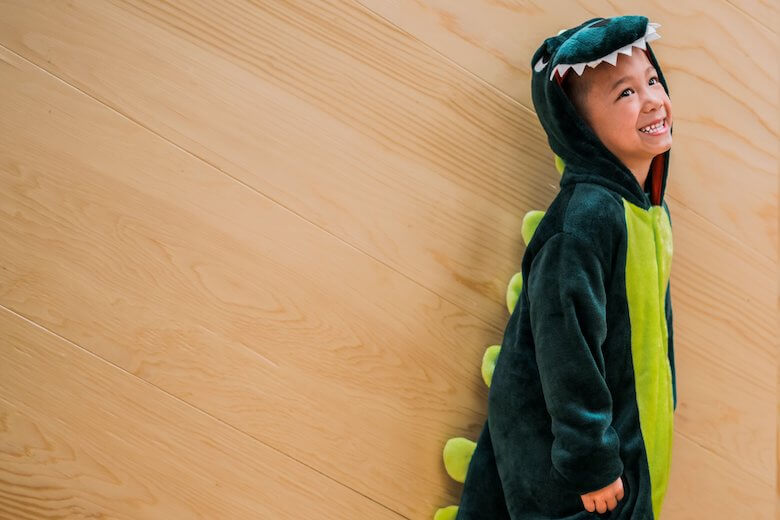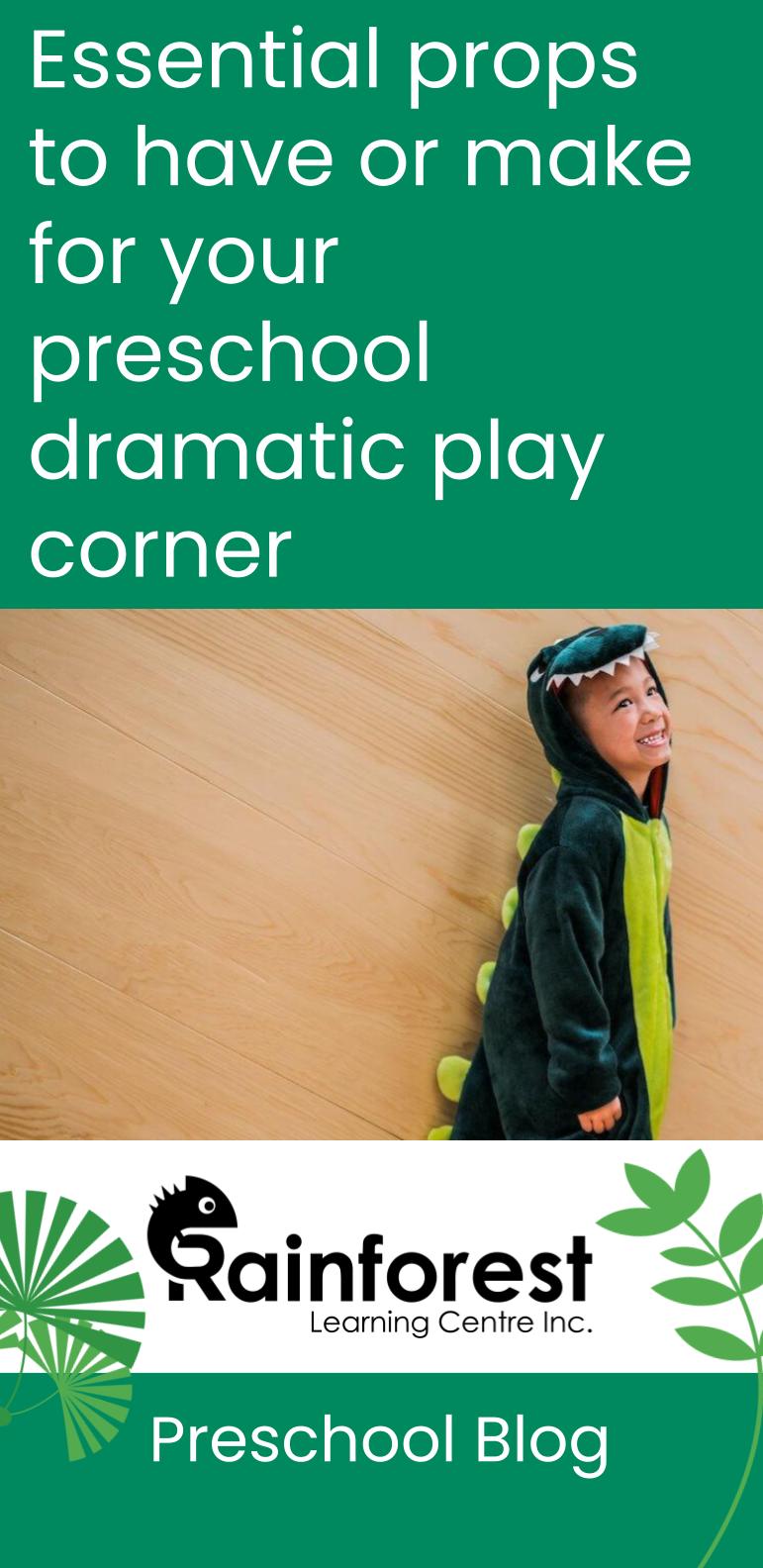
Imagination and storytelling is a pertinent part of childhood development. It comes with many learning benefits, as do the various types of play (dramatic play being one of them). In early childhood, children who go to daycare or preschool may have the opportunity to practice group role-playing games, whether on the playground, or in a dedicated corner, indoors. Though, they can do this at home, no doubt. How can we foster this essential element of learning in the lives of preschoolers?
See related article on our blog:
- 4 Benefits of kids telling their own stories
- 4 reasons to encourage play in early childhood years
- 5 Imagination games to play with toddlers and young kids
- What are the common types of play in childhood? Why are they important?
In this article, we’ll give some ideas for the furniture, supplies and props that can encourage preschool dramatic play in your early childhood classroom or daycare.
Play furniture to encourage dramatic role playing in preschool
Depending on the size of your home or child care centre, you may be able to keep a little, or a lot of these things. However, the quantity is not that important; you’ll notice that children can imagine objects as being other things, or even pretend they exist ‘in the air.’ That’s wonderful, and should be encouraged.
However, to help children along, you can spark a bit of story-telling role play by including the following furniture pieces in your learning center, or home playroom:
- Play kitchens
- Miniature kitchen tables and chairs (or desks)
- Doll strollers
- Toy shopping carts
- Toy vacuums and cleaning supplies
- Toy cars that kids can sit on
- Play tents and tunnels
- Bean bags (keep these away from babies, though)
- Miniature tree houses and slides (small enough to fit indoors, and age-appropriate)
- Puppet stands
- Large mirrors (so the kids can see themselves act)
You can also get creative by making temporary play furniture or objects out of large, painted cardboard such as:
- Ice cream or lemonade stands
- Castles
- Spaceships (see ours in this post)
- School buses, tractors and cars
- Igloos
- Car washes
- Doll beds
- Boats and ships with paddles
- Mailboxes
- Gas stations
- Horsies on sticks (there are many ways to do this)
Plus, many more examples, with photos, listed here, and here.
Costumes and props for children’s imagination games
We often think of costumes as being a Halloween thing only, but they don’t have to be limited to that. They can be used throughout the year! Costumes can come in nearly any form nowadays, so we won’t list them all here.
But, you don’t need a closet full of costumes for preschool dramatic play corners. You can use minor props that are almost like ‘partial’ costumes (kids will be just as happy with these!). Some ideas include:
- Toy doctor stethoscope, bandages and other doctor tools
- Toy construction toolbox
- Sunglasses (safe ones, for kids)
- Character hats (e.g. police hat, construction hard hat, fireman hat, cowboy hat, pirate hat, chef’s hat, derby hat, fascinators, surgical caps, crowns, unicorn and animal ear headbands and even Indian feather headdresses)
- Capes and hooded shawls (e.g. for superhero games, red riding hood, medieval times, etc.)
- Plastic swords (be careful with these – they can also be made)
- Purses and shopping bags
- Wands
- Masks
- Stick horses or rocking horses
- Character clothing pieces e.g. cowboy vest, doctor’s lab coat) or pictorial tunics
- Tutus
- Grass skirts
- Plastic or cloth-made objects, like food, faux money, etc.
- Toy cash register
- Toy phones
- Bubble makers
- Balance scales
- Clocks
- Abacuses
- Puppets
- Toy musical instruments
- Toy microphones
In arts and crafts sessions, children can make the following props for their imagination games:
- Restaurant menus
- Clay, felt or paper ‘food’ (e.g. pizza toppings, fruit, etc.)
- Plates and cutlery (paint paper plates, etc.)
- Paper hats, crowns and animal ears
- Police badges
- Building or street signs (bank, store, restaurant, stop sign, traffic lights)
- Flags
- Paper ‘fires’ (for ‘camping,’ ‘cooking’, etc.)
- Treasure maps and treasure boxes
- Beaded necklaces (keep away from babies in your daycare)
- Farm animals
You can also get very creative with household items, or items that can ‘transform’ into symbolic play props, such as:
- Colanders (as robot or space hats)
- Oven mitts
- Baking tools (simple cupcake tins, small pots, tongs, wooden spoons, whisks, etc.)
- Paper towel rolls (do you see a telescope?)
- Empty, cleaned food containers (e.g. kids can ‘shop’ for macaroni and cheese boxes, or ketchup bottles)
- Laundry baskets
- Buckets and baskets
- Plastic cups, plates and utensils
When using role-play props and furniture, let your imagination ‘go wild’ with dramatic play!
As you can see from the list above, your preschool classroom’s dramatic play materials don’t need to be store-bought. They can be made out of cardboard and paint. Or, you can turn them into thematic craft activities with the children. This may create more meaning to their games too – they’ll feel a sense of purpose in their art.
Whatever you do – don’t let your minds be limited. A stick sword can easily become a microphone for a rock star, or a spaceship control lever. Encourage the children to imagine the props they don’t have on-hand, too. Air guitar is just as cool as ‘real’ guitar! In fact, some may argue that having too many pre-made toys can be limiting to the imagination. So there’s no need to go overboard. Create, or introduce these objects as you see fit, for your own childrens’ play needs.
